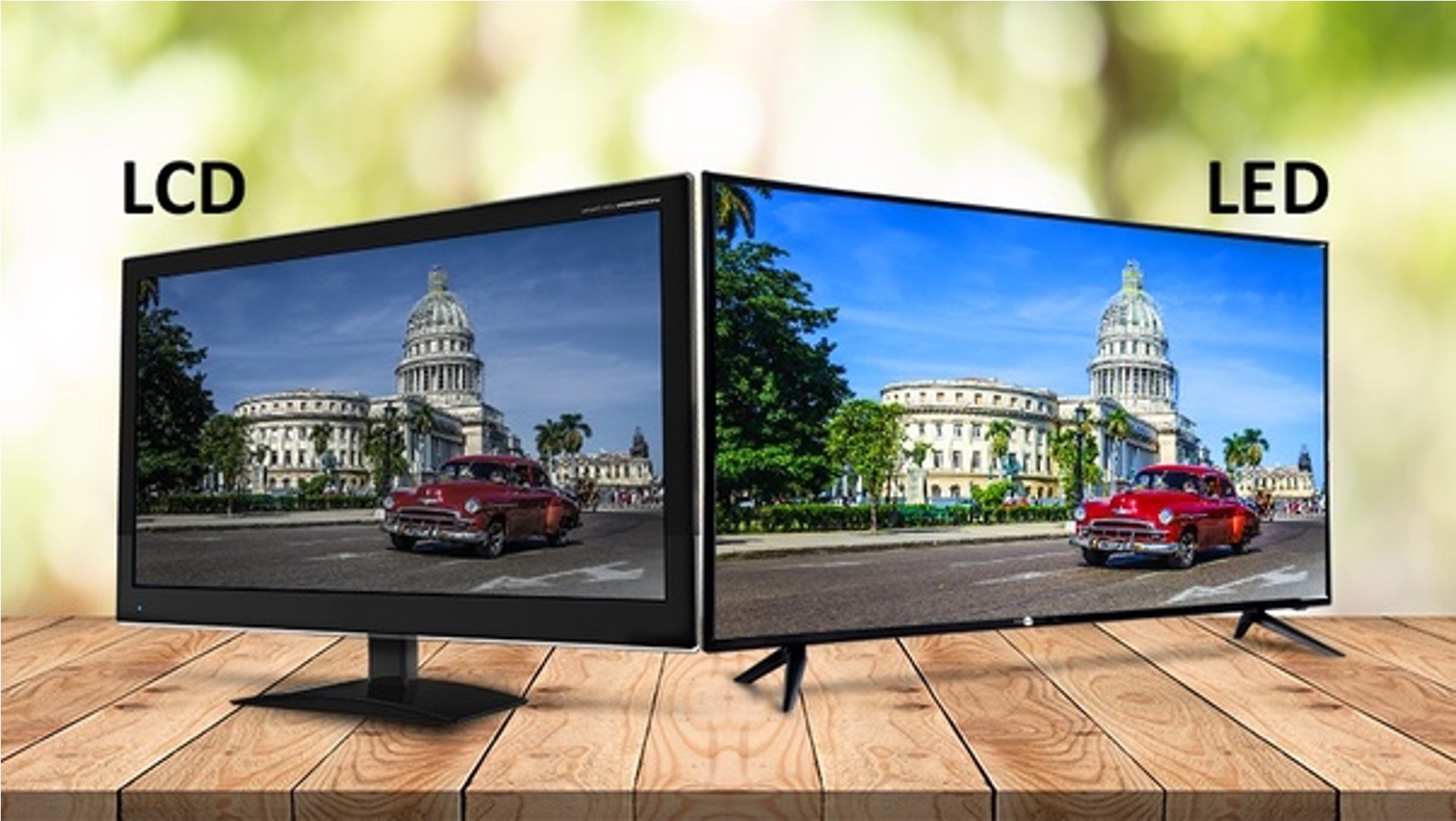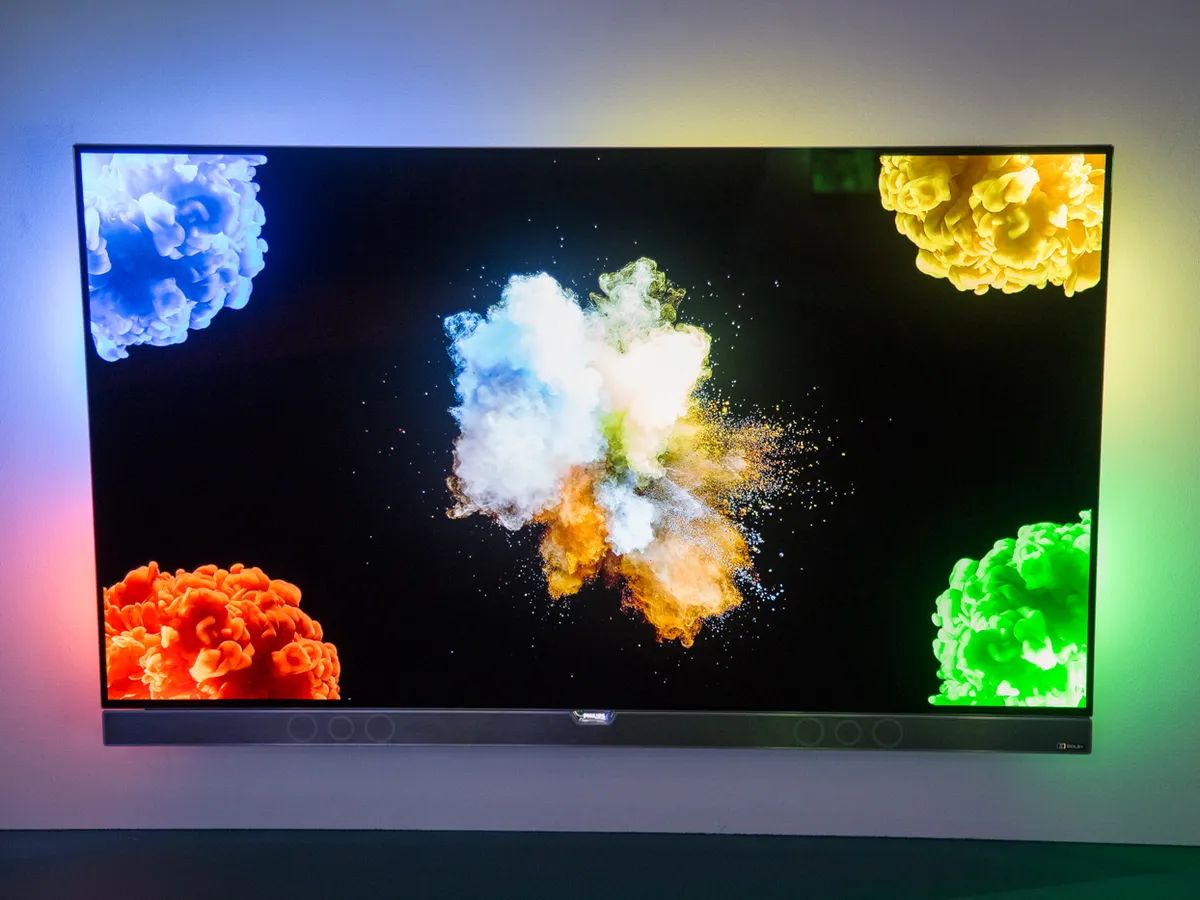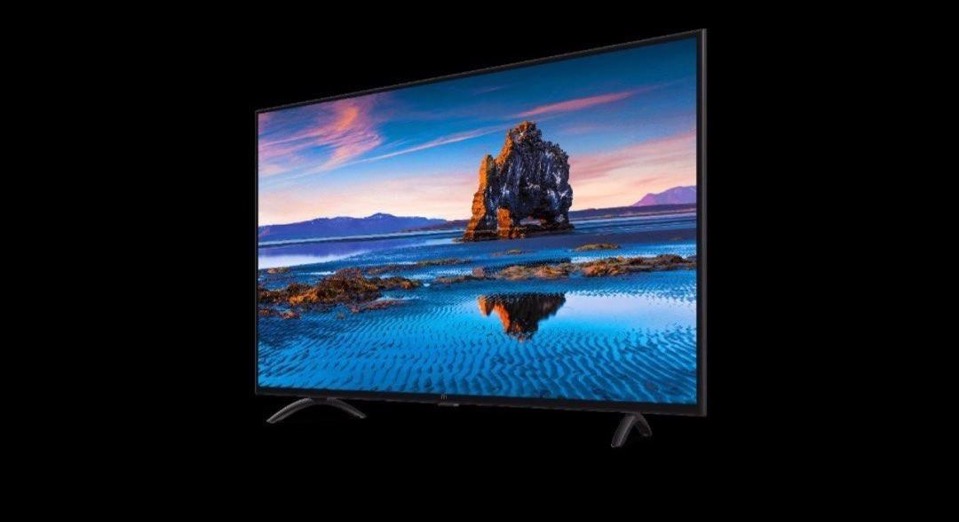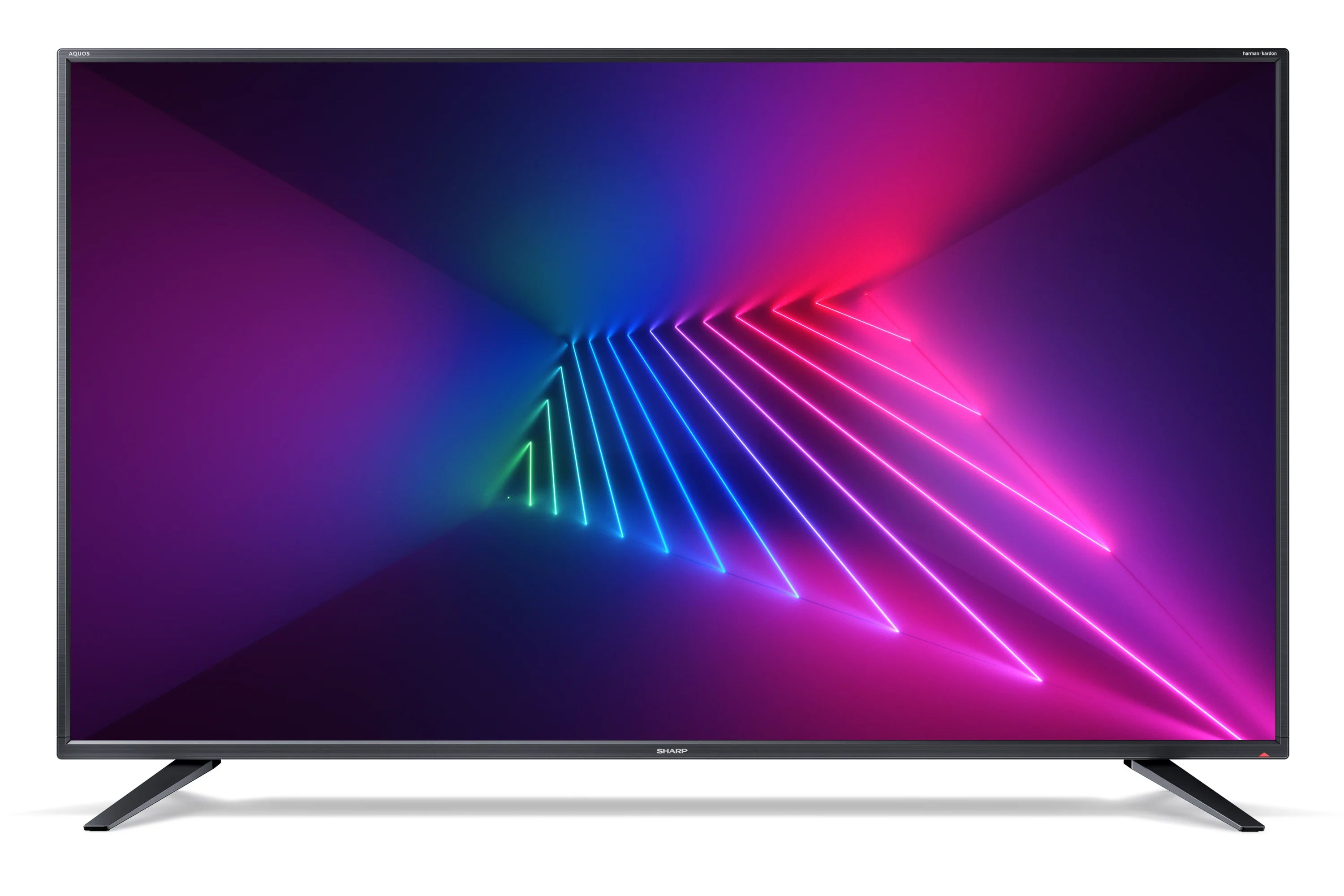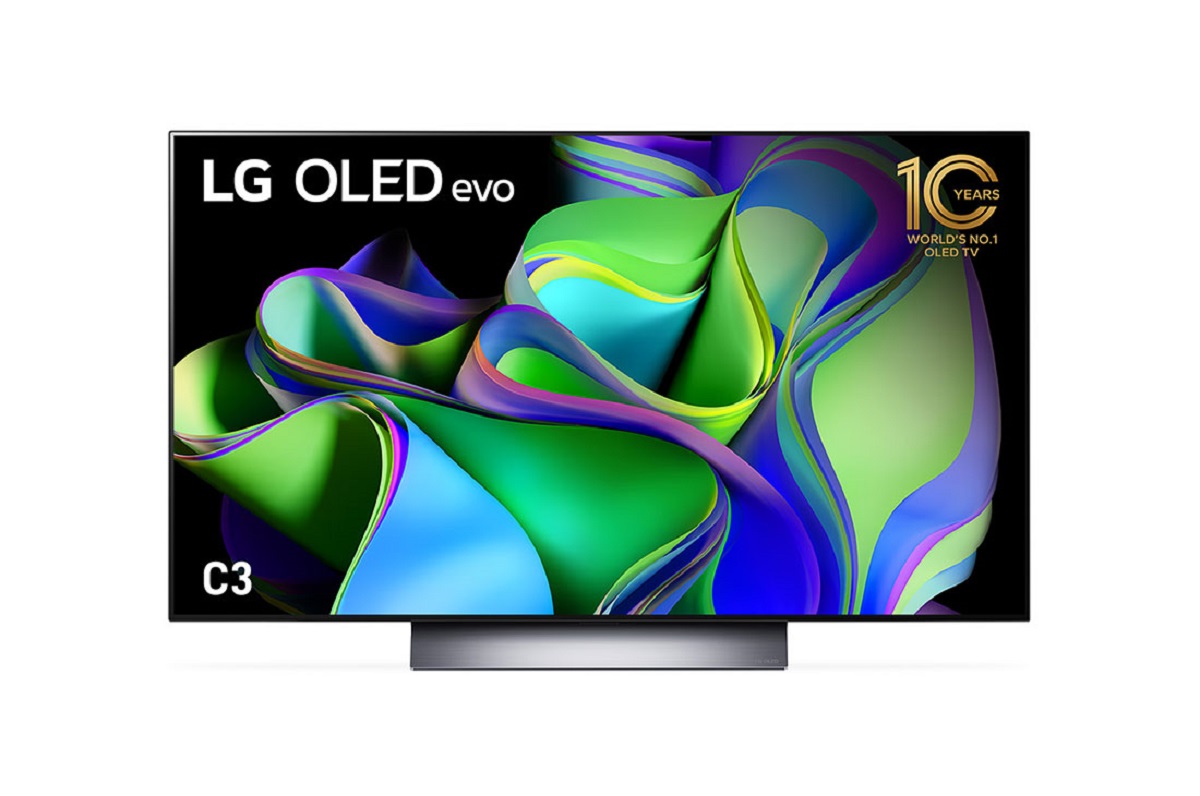Introduction
When it comes to purchasing a new television, there are various options available in the market. Among these options, LCD TVs and LED TVs are two of the most popular choices. While they may sound similar, there are significant differences between the two technologies. Understanding these differences is essential to make an informed decision when buying a new TV.
LCD, which stands for Liquid Crystal Display, was the first technology to revolutionize the television industry. This technology works by using liquid crystals that manipulate light to create images on the screen. On the other hand, LED, which stands for Light Emitting Diode, is an advanced version of LCD technology that incorporates an additional layer of light-emitting diodes for backlighting.
Both LCD and LED TVs offer excellent picture quality and a wide range of features, but they differ in terms of performance, energy efficiency, and price. In this article, we will delve into the intricacies of LCD and LED TVs, highlighting their differences, advantages, and disadvantages.
By the end of this article, you will have a clear understanding of the key distinctions between LCD and LED TVs, enabling you to make a well-informed decision based on your specific requirements and preferences.
Definition of LCD TV
A LCD TV, also known as Liquid Crystal Display TV, is a television technology that uses liquid crystals to create images on the screen. The liquid crystals are housed in between two layers of glass and are manipulated to control the amount of light passing through them, producing the images that we see on the screen.
The key component of an LCD TV is the liquid crystal layer. This layer is made up of numerous tiny pixel-sized cells, each containing a liquid crystal that can block or allow the passage of light. These liquid crystals can be manipulated electronically to control the color and intensity of each pixel, resulting in vibrant, high-resolution images.
One of the characteristics of LCD TVs is their use of a backlighting system. This backlight provides the necessary illumination for the liquid crystals to create the images on the screen. The backlight can be configured using different methods, such as Cold Cathode Fluorescent Lamps (CCFL) or Light Emitting Diodes (LEDs).
LCD TVs are known for their slim and lightweight design, making them highly versatile and suitable for various mounting options. They are also capable of displaying high-definition content, providing viewers with crisp and detailed images. Additionally, LCD TVs typically have a wide viewing angle, allowing multiple viewers to enjoy the content without any loss in picture quality.
It’s important to note that LCD TVs have evolved over the years, with advancements in technology improving their performance and features. This includes enhancements in color reproduction, response time, and refresh rates, resulting in smoother motion and better image quality.
In summary, LCD TVs utilize liquid crystals to create images on the screen, offering slim design, high-definition capabilities, and wide viewing angles. However, to fully understand the differences between LCD TVs and LED TVs, it’s crucial to explore the definition and features of LED TVs as well.
Definition of LED TV
An LED TV, also known as Light Emitting Diode TV, is a television technology that incorporates an additional layer of light-emitting diodes for backlighting. LED TVs are an advancement of LCD technology, providing improved picture quality and energy efficiency.
Unlike LCD TVs that use CCFL backlighting, LED TVs utilize light-emitting diodes to illuminate the liquid crystal layer. LED backlighting offers several advantages, including higher brightness levels, better contrast ratios, and more accurate color reproduction. This results in sharper and more vibrant images on the screen.
There are two types of LED backlighting methods used in LED TVs: edge-lit and full-array. Edge-lit LED TVs have LEDs placed along the edges of the TV panel, directing light inward to illuminate the screen. This design allows for incredibly slim profiles and lightweight designs.
On the other hand, full-array LED TVs have LEDs positioned behind the entire TV panel, creating a uniform backlight across the screen. This design enables local dimming, where certain areas of the screen can be dimmed or turned off to achieve deeper blacks and better contrast ratios.
LED TVs also offer enhanced energy efficiency compared to LCD TVs. The use of LEDs as backlighting requires less power, resulting in lower electricity consumption. This not only reduces energy costs but also makes LED TVs more environmentally friendly.
In addition to their visual and energy-efficient advantages, LED TVs often come equipped with advanced features and technologies. These can include HDR (High Dynamic Range) support, which expands the color and contrast range for a more immersive viewing experience. Some LED TVs also feature higher refresh rates, reducing motion blur and making fast-paced action scenes appear smoother.
LED TVs are available in various sizes, resolutions, and price ranges, catering to diverse consumer needs and budgets. Whether you’re looking for a compact TV for your bedroom or a large-screen TV for your living room, LED TVs offer a wide range of options to choose from.
In summary, LED TVs utilize light-emitting diodes for backlighting, providing improved picture quality, energy efficiency, and advanced features. The next section will delve into the key differences between LCD TVs and LED TVs, shedding light on which technology may be more suitable for your requirements.
Differences between LCD TV and LED TV
While LCD TVs and LED TVs share some similarities, there are significant differences that set them apart. Understanding these differences is crucial to determine which technology best suits your needs. Here are the key distinctions between LCD TVs and LED TVs:
1. Backlighting Technology: The most significant difference between LCD TVs and LED TVs lies in their backlighting methods. LCD TVs use Cold Cathode Fluorescent Lamps (CCFL) for backlighting, while LED TVs use light-emitting diodes. LED backlighting offers benefits such as higher brightness levels, better contrast ratios, and improved color accuracy, resulting in enhanced picture quality compared to LCD TVs.
2. Energy Efficiency: LED TVs are more energy-efficient than LCD TVs. The use of LEDs for backlighting requires less power consumption, resulting in lower electricity bills and a reduced impact on the environment. LED TVs are known for their energy-saving features, making them an eco-friendly choice.
3. Slim Design: LED TVs often have a slimmer and sleeker design compared to LCD TVs. This is primarily because LED technology allows for thinner screens and more flexible placement options. LED TVs are known for their thin profiles, lightweight construction, and stylish aesthetics.
4. Contrast Ratio: The contrast ratio refers to the difference between the brightest whites and the deepest blacks displayed on the screen. LED TVs typically have better contrast ratios compared to LCD TVs, thanks to their ability to dim or turn off certain areas of the screen selectively. This results in deeper blacks and more vibrant and detailed images.
5. Price: Historically speaking, LCD TVs have been more affordable compared to LED TVs. However, with advancements in technology and increased market competition, the price difference has become less significant. LED TVs are now available in a wide range of price points, making them accessible to consumers with varying budgets.
While LED TVs offer several advantages over LCD TVs, it’s worth mentioning that some LCD TVs can still compete in terms of overall picture quality and affordability. There are high-end LCD TVs available that utilize advanced technologies to deliver excellent visual performance, blurring the lines between the two technologies.
As a consumer, it is essential to consider your specific requirements, preferences, and budget when choosing between LCD and LED TVs. Assessing factors such as the desired picture quality, energy efficiency, design aesthetics, and pricing will help you make an informed decision.
In the next sections, we will explore the advantages and disadvantages of both LCD TVs and LED TVs, providing a comprehensive overview to assist you further in selecting the most suitable television technology for your needs.
Advantages of LCD TV
LCD TVs offer a range of advantages that make them a popular choice among consumers. Here are some of the key advantages of LCD TVs:
1. Affordability: LCD TVs have a long history in the market, and as a result, they are generally more affordable compared to their LED counterparts. This affordability makes LCD TVs accessible to a wider range of consumers, especially those on a budget.
2. Wide Availability: LCD TVs are widely available, making it easy to find a model that fits your needs and preferences. Whether you’re looking for a smaller TV for a bedroom or a larger screen for a home theater setup, there are plenty of options to choose from in the LCD TV market.
3. Color Reproduction: LCD TVs are known for their accurate color reproduction, delivering vibrant and lifelike images. They are capable of displaying a wide color gamut, ensuring that colors appear rich and true to life on the screen.
4. Wide Viewing Angle: LCD TVs typically offer a wide viewing angle, allowing for comfortable viewing from various positions in a room. This means that even viewers sitting at an angle or off to the side can still enjoy a high-quality image without experiencing color distortion or loss of clarity.
5. Motion Handling: LCD TVs have developed improved motion handling over the years, reducing motion blur and ensuring smooth image transitions. This is particularly beneficial for watching fast-paced action scenes, sports, and playing video games, where fluid motion is essential.
6. Durability: LCD TVs are generally known for their durability. The use of liquid crystal technology and solid-state components makes LCD TVs more resistant to damage from shock or impact compared to other display technologies.
While LCD TVs have their advantages, it’s important to note some of their limitations as well. LCD displays may experience issues such as motion blur, limited contrast ratios, and uneven backlight illumination. However, advancements in technology have significantly improved these areas, reducing the impact of these disadvantages.
Considering the affordability, wide availability, quality color reproduction, wide viewing angles, improved motion handling, and durability, LCD TVs continue to be a popular choice in the television market, catering to the diverse needs of consumers.
Advantages of LED TV
LED TVs, with their advanced technology, offer several advantages that make them a sought-after choice for consumers. Here are some of the key advantages of LED TVs:
1. Superior Picture Quality: LED TVs provide superior picture quality compared to LCD TVs. The use of light-emitting diodes for backlighting enhances brightness, contrast ratios, and color reproduction, resulting in more vibrant and lifelike images on the screen. LED TVs can display deeper blacks and brighter whites, creating a more dynamic viewing experience.
2. Energy Efficiency: LED TVs are known for their energy efficiency. Compared to LCD TVs that use CCFL backlighting, LED backlighting consumes less power. This not only reduces electricity consumption but also lowers energy costs. LED TVs are eco-friendly, helping to minimize their impact on the environment.
3. Slim and Stylish Design: LED TVs are renowned for their slim and stylish design. The use of light-emitting diodes allows for thinner screens, making LED TVs incredibly thin and lightweight, which complements any modern living space. Their slim design also offers versatility in terms of mounting options and placement within a room.
4. Local Dimming: Full-array LED TVs feature local dimming capability, enhancing contrast ratios by selectively dimming or turning off specific areas of the screen. This results in deeper blacks and more precise control over the backlighting, which enhances overall image quality and provides a more immersive viewing experience.
5. Enhanced Features: LED TVs often come equipped with advanced features. These include support for High Dynamic Range (HDR) content, which expands the color and contrast range, providing more lifelike visuals. Additionally, LED TVs may offer higher refresh rates, reducing motion blur and making fast-paced scenes appear smoother.
6. Wider Range of Screen Sizes and Resolutions: LED TVs are available in a wide range of screen sizes and resolutions, catering to the diverse needs and preferences of consumers. Whether you’re looking for a compact TV for a kitchen or a large-screen TV for a home theater setup, LED TVs offer numerous options to choose from.
Considering the advancements in picture quality, energy efficiency, stylish design, local dimming, enhanced features, and a wide range of sizes and resolutions, LED TVs provide an exceptional viewing experience that appeals to many consumers.
It’s important to note that while LED TVs offer several advantages, they may come at a higher price point compared to LCD TVs. However, the cost has become more competitive over time, making LED TVs increasingly accessible to a wider range of budgets.
Next, we will explore the disadvantages of LCD TVs and LED TVs, providing a comprehensive perspective to assist you further in making an informed decision.
Disadvantages of LCD TV
While LCD TVs have many advantages, there are a few limitations worth considering. Here are some of the key disadvantages of LCD TVs:
1. Limited Contrast Ratio: LCD TVs typically have a lower contrast ratio compared to LED TVs. This can result in less distinct differentiation between black and white levels, leading to slightly diminished image quality in terms of depth and richness.
2. Motion Blur: LCD TVs can experience motion blur, especially during fast-paced scenes or sports events. Although the motion handling has improved over the years, LCD displays may still exhibit slight blurring or ghosting effects, which can impact the viewing experience for some viewers.
3. Limited Viewing Angles: LCD TVs often have limited viewing angles, meaning that the picture quality may degrade when viewed from the sides or at certain angles. This can result in color shifting or loss of image clarity for viewers sitting off-center.
4. Backlight Uniformity Issues: Some LCD TVs may suffer from backlight uniformity issues, which can manifest as uneven lighting or backlight bleeding. This may lead to areas of the screen appearing brighter or darker than others, impacting the overall picture quality and immersion.
5. Thickness and Weight: While LCD TVs have evolved to become slimmer and lighter over time, they generally are thicker and heavier compared to LED TVs. This may not be a significant concern for most users, but it’s worth considering if you prioritize slim and lightweight designs for wall mounting or ease of transport.
6. Limited Color Gamut: While LCD TVs offer vibrant color reproduction, some models may have limitations in displaying the full color gamut, resulting in slightly less accurate colors compared to other display technologies like OLED or high-end LED TVs.
It’s important to note that the disadvantages mentioned here do not apply to all LCD TVs and may vary depending on the specific model, brand, and technology used. Some higher-end LCD TVs have mitigated these issues through advanced features such as local dimming and improved motion handling.
Considering these potential downsides, it’s important to carefully evaluate your priorities and preferences when choosing between LCD and LED TVs, ensuring that the drawbacks of LCD technology are weighed against its advantages and your specific needs.
Disadvantages of LED TV
While LED TVs offer numerous advantages, there are a few drawbacks to consider. Here are some of the key disadvantages of LED TVs:
1. Higher Price: LED TVs tend to be more expensive compared to LCD TVs. The advanced technology and improved picture quality come at a higher cost. However, the price difference between LED and LCD TVs has become less significant over time as LED technology has become more widely adopted.
2. Risk of Uniformity Issues: Some LED TVs may experience uniformity issues, such as backlight bleeding or clouding. This can manifest as uneven brightness on the screen, especially in darker scenes. While this issue can be noticeable in certain scenarios, it varies depending on the specific model and manufacturer.
3. Limited Angle of View: LED TVs, especially edge-lit models, may have a limited angle of view. Viewers sitting at extreme angles or located off-center may experience a loss of picture quality, color accuracy, or reduced contrast. This can be a factor to consider, especially if you have a large seating arrangement or frequently host gatherings.
4. Potential Motion Smoothing Artifacts: Some LED TVs, particularly those with high refresh rates and motion enhancement features, may introduce motion smoothing artifacts. These artifacts, commonly known as the “soap opera effect,” can make movies and TV shows appear unnatural or overly smooth. It’s worth noting that this can be adjusted or disabled in the TV settings.
5. Limited OLED-like Black Level Performance: While LED TVs offer improved contrast compared to LCD TVs, they still cannot achieve the deep black levels and pixel-level control of OLED (Organic Light Emitting Diode) technology. This difference in black levels can affect image quality, especially in scenes with a high contrast between light and dark areas.
6. Potential Heat Generation: LED backlighting can generate heat, although the amount of heat produced is relatively low. However, it’s important to ensure proper ventilation and avoid blocking the TV’s cooling vents to prevent the accumulation of heat, which can affect the TV’s performance and longevity.
It’s important to note that these disadvantages are not deal-breakers and may not be significant concerns for all users. LED TVs continue to offer exceptional picture quality, energy efficiency, and advanced features that often outweigh these limitations. Additionally, manufacturers strive to address or minimize these issues through ongoing technological advancements.
When considering an LED TV, it’s advisable to research specific models, read reviews, and compare features to find a TV that aligns with your preferences and priorities while taking into account any potential drawbacks mentioned above.
Conclusion
When deciding between LCD TVs and LED TVs, it’s essential to consider the unique features and characteristics of each technology. LCD TVs offer advantages such as affordability, wide availability, good color reproduction, wide viewing angles, improved motion handling, and durability. On the other hand, LED TVs provide superior picture quality, energy efficiency, slim and stylish designs, local dimming capabilities, enhanced features, and a wider range of screen sizes and resolutions.
Both technologies have their disadvantages to keep in mind. LCD TVs may exhibit limited contrast ratios, motion blur, limited viewing angles, backlight uniformity issues, and have slightly thicker profiles. LED TVs, on the other hand, can be more expensive, may experience uniformity issues, have limited angles of view, potential motion smoothing artifacts, and cannot achieve the same black levels as OLED technology.
Ultimately, the choice between LCD and LED TVs depends on your personal preferences, needs, and budget. Consider factors such as picture quality, energy efficiency, design aesthetics, viewing angles, motion handling, and price to make an informed decision.
It’s worth noting that technology is constantly evolving, and manufacturers continue to make advancements in both LCD and LED TVs. These advancements aim to address the limitations and enhance the overall performance and user experience of the televisions.
Take the time to research and read reviews of specific models from reputable brands to find the TV that best suits your requirements. Consider visiting local electronic stores to witness the picture quality and compare features firsthand. By doing so, you can confidently select the television that will provide you with hours of enjoyment and immersive entertainment.







